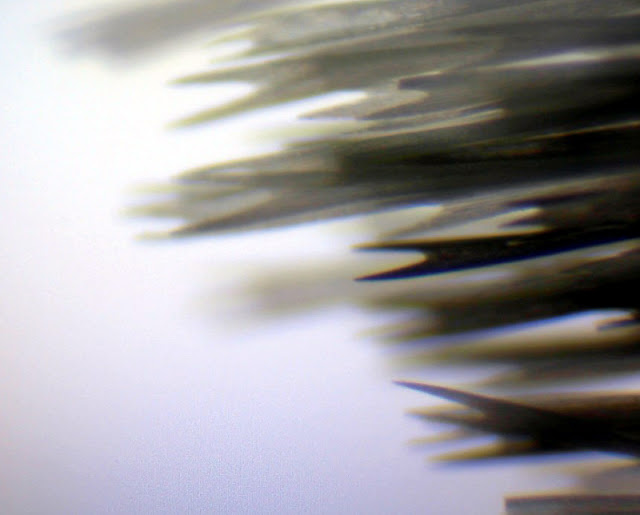Lesson learned, don't flap around when fragile butterfly wing bits are on the microscope slide as they have a tendency to catch the breeze and float into oblivion.
This was taken from the upper surface of the butterfly wing, the blue colour isn't obvious as the light is shining through from underneath. What I found interesting were the little scale structures. Are these going to grow into larger scales, or are they subsidiary? Interspersed among the scales are hair like structures (are they hairs or modified scales?) (Addendum: I've just found out that scales are modified hairs).
I took some pictures at higher magnification, but will need to do some serious Googling to see if I can find anything about the details of types and forms of wing scales. Initial forays into the ether have not been very successful.
Scales were removed using the sellotape method and I then looked at the wing. It would seem that the scales are laid down on a membrane.
The following two images show the same section of wing taken with top lighting (top image) and transmitted light (bottom image).
It is clear that the scales on the upper surface of the wing are quite different is shape to those on the under surface.
Top lighting (top image) shows the blue colour of the upper wing surface. The transmitted light (lower bottom image) seems to show more detail of the scales.






















